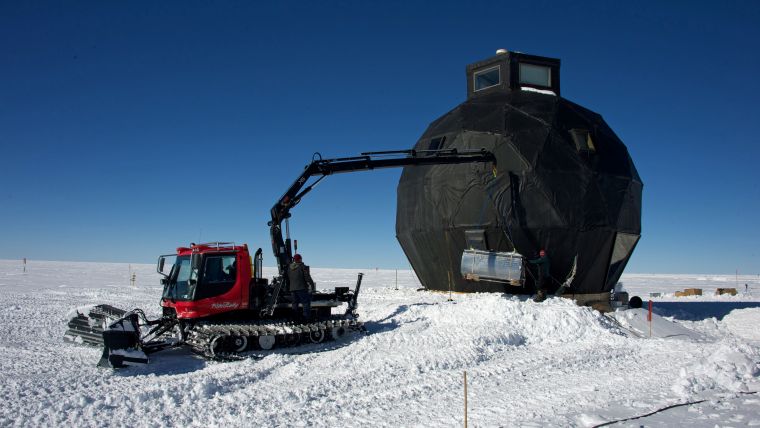How the Coronavirus Pandemic Stopped Drilling in the Ice
EastGRIP fieldwork cancelled
Coronavirus lockdowns have been touted on social media as helping to fight climate change. However, in the Arctic Circle, the virus is disrupting climate science and could leave important gaps in our understanding, Deutsche Welle (DW) reports. Every year, 150 climate scientists travel far into the ice-cold wilderness, more than a thousand miles from the nearest airport, and bore deep into Greenland's largest glacier as part of the EastGRIP project. This project aims to understand how ice streams beneath the glacier are pushing vast amounts of ice into the ocean, and how this contributes to rising sea levels. This year, the drills will be silent and the ice streams will go unmeasured, because of the coronavirus pandemic.
The fallout from measures to contain the outbreak has made this year's research impossible, one reason being that Greenland is closed to foreigners. The scientists were hoping to complete the 2,660 metre (8,727 foot) hole they have been drilling for the past five years, and finally access the ice streams they've been hunting for. They were also hoping to reach the bedrock this year, but now that this year's project has been cancelled, unique data will be lost. Read the full story here.
About the EastGRIP Project
Going to the Greenland Ice Sheet to drill an ice core is complicated. The operation includes a vast amount of logistics, including making plans for fieldwork, budgets, schedules, documentation for authorities, applying for permissions, purchasing equipment, planning flights, managing accounts, and hiring tradesmen and women for fieldwork.
The logistics are coordinated by the Danish Centre for Ice and Climate and require close collaboration with the US Office of Polar Programs, the National Science Foundation (NSF) and the NSF contractor in Greenland, CH2MHill Polar Field Services. The flights take place in Hercules aeroplanes owned by the NSF and operated by the US Air National Guard. The project also has many partners from all around the world.
Deutsche Welle is Germany’s international broadcaster. Its multimedia content, in 30 languages, reaches over 197 million people worldwide each week. Photo: After storage in the garage during winter, the large water melter for washing and cleaning is reinstalled next to the dome (courtesy East Greenland Ice-core Project, www.eastgrip.org).














